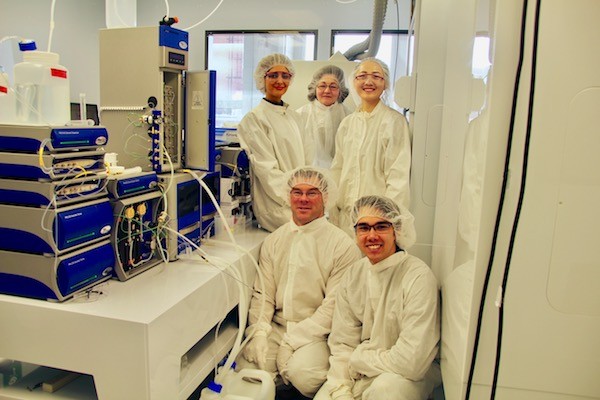Members Login

Channels
Special Offers & Promotions
Measuring Trace Metal Colloid Distribution in The Environment
Postnova Analytics reports on how the SWAMP ultra-clean research facility at the University of Alberta (Alberta, Canada) has been using the AF2000 Flow field flow fractionation system coupled to Inductively Coupled Plasma Mass Spectrometry (ICP-MS), UV and fluorescence detectors to characterise trace metal colloid distribution in the environment.
The accurate measurement of trace elements in the environment requires specialised techniques and conditions for sample collection, handling and analysis because their concentrations are often very low. If these techniques are not used, then samples can become easily contaminated. The key analytical challenges in measuring nanoparticles and dissolved metals in the environment are separating them into the different sizes/species that govern their various levels of bioavailability and performing the separation in a non-destructive fashion, so that the measured speciation reflects the original condition of the sample.
The SWAMP lab at the University of Alberta is a metal-free, ultraclean research facility, purpose-built for analysing trace elements at low concentrations in Soils, Water, Air, Manure, and Plants. Created by Professor William Shotyk, Bocock Chair for Agriculture and the Environment, the SWAMP facility supports research in the Department of Renewable Resources by analysing the concentration and speciation of trace elements in complex natural media. The SWAMP lab also conducts cutting-edge research in Analytical Geochemistry by developing innovative methods to extract and quantify trace element concentrations, and to measure the size distribution of their dominant species with minimal disruption to their natural form.
Dr Chad W Cuss, a post-doctoral fellow at the SWAMP lab commented “The speciation of dissolved trace elements and small particulates (colloids) is sensitive to pH, ionic strength and temperature, and loosely bound complexes are easily broken apart by strong separation forces. Flow field-flow fractionation (FlFFF) minimizes disruption to the natural speciation of trace elements because the pH and ionic strength of the carrier fluid can be adjusted to reflect natural conditions, and the temperature of the separation channel is controllable. The FlFFF separation mechanism produces minimal shear forces, so that complexes remain intact. FlFFF can also perform this separation over a broad size range (1 nm–10 ??m), allowing the non-destructive separation and speciation of trace elements over virtually the entire relevant size range for aquatic organisms. Usefully, FlFFF is easily coupled to other analytical techniques, facilitating the simultaneous analysis of organic matter quality using for instance a UV-Visible or fluorescence detector, and trace element concentrations using inductively coupled plasma mass spectrometry (ICP-MS). Combined with these detectors, FlFFF has unparalleled ability to measure the size-based distribution of trace elements amongst different colloidal species”.
Dr Cuss added “We have found that the Postnova AF2000 system is exceptionally well built and reliable. So-called ‘wear parts’ routinely exceed their lifetimes and the system performs optimally with negligible maintenance. The separation channel is readily accessed, making it easy to observe the focusing position and exchange the separation membrane. The channel design also allows operation at high pressures and flow rates which are necessary for optimal resolution when using the separation membrane with the smallest pore size (300 Daltons). This pore size is needed to retain and resolve the smallest trace element species. The AF2000 also uses high-pressure, independent pumps to control opposing flows in the channel, which are also necessary to operate at high flow rates and pressures. This work could not occur without coupling the AF2000 to UV, fluorescence, and ICP-MS detectors. The multi-detector communications platform, autosampler, and fraction collector have made it straightforward to automate analyses and standardize procedures, facilitating the relatively high ratio of throughput/labour required to make this research economically feasible. Most importantly, the Postnova AF2000 system includes the expertise of Postnova personnel, who are exceptionally accessible and ready to assist with method development and technical support over the long term”.
The Postnova AF2000 is a high-performance Flow field-flow fractionation platform for separation of nanoparticles, macromolecules and proteins in complex matrices. Modular in design, the AF2000 incorporates the combined experience, expertise and technological advances from Postnova Analytics' two decades of leadership in FFF. Incorporating a range of FFF modules in a single integrated system to provide universal separation, the AF2000 offers more flexibility, better performance and more robust results than any system before.
Media Partners



